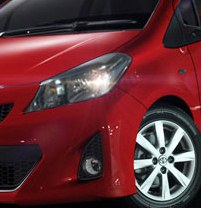Correct Use of Car Lights
Article Content is Copyright © 2012 - 2024 Peta Daniels | Car Rental Buddy
We all actively use our car lights, but many are unsure on their correct use in relation to weather conditions and driving environments. We have compiled some helpful tips to help you in knowing how to correctly use your car lights.
Fog Lights
- Front Fog Lights
Front fog lights are designed for use in hazardous weather conditions for the purpose of improving road vision by emitting a wide beam that enhances lighting below the level of mist and fog.
Correct Use: Australian Road Rules stipulate that fog lights are to only be used in fog or adverse weather conditions. Fines do apply for incorrect use with many fines including deduction of demerit points. Each State outlines individual penalties associated with fines and demerit points.
- Rear Fog Lights
Emitting a bright red glow, rear fog lights are designed to be used in the same adverse weather conditions as the front fog lights such as fog, mist, heavy rain, etc. Their key purpose is to enhance the visibility of the vehicle for motorists travelling behind.

Driving Lights
Driving lights are an additional feature on certain cars and are designed to provide additional lighting in driving environments such as country roads. Their functionality is in accordance with high beam lights and should only operate as an optional feature when high beam is active.
Headlights
Headlights, also known as low beam, are the standard lighting on all vehicles and are required to be operated from sunset to sunrise. Headlights should also be operated during rain, fog, and other adverse weather conditions.
High Beam
High beam equips drivers with additional lighting and can be used on all roads, however, low beam is to be used when a fellow motorist is approaching within 200 metres and if a fellow motorist is travelling in front within 200 metres.It is advised not to use high beam when driving in fog, mist, or heavy rain as the light source can impede vision due to reflection.

Daytime Driving Lights
Daytime driving lights are a feature on specific cars that are automatically activated while the vehicle is turned on. Daytime driving lights are specifically designed to provide an additional safety feature to make the vehicle more visible for oncoming motorists in both normal and overcast conditions.
Using the correct and appropriate car lighting will also assist with providing clear vision to ensure you can see a safe distance in front.
Take care and stay safe on our roads.

